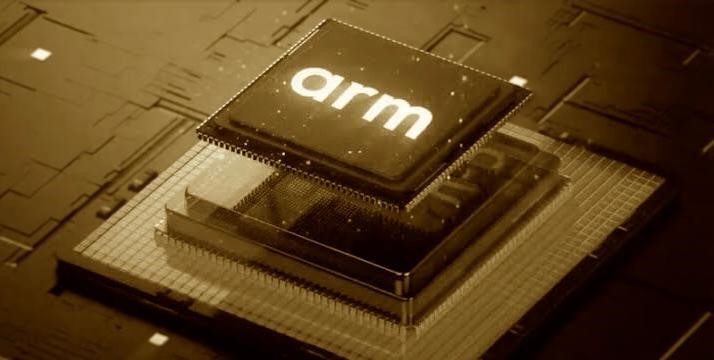
When Apple announced that it would be moving to the Arm side, Intel and the x86 architecture took a serious hit. Arm-based CPUs have been gaining market share faster than Intel, and Intel has been finding it difficult to compete with them. However, what is Arm and why is it getting more well-liked? Let’s investigate.
What is an Arm processor?
Arm processors are not new. They have been used since the 80s in some of the first personal computers. But you might not see a laptop or desktop with an “Arm” chip inside like you would with Intel or AMD processors. That’s because Arm is different from Intel or AMD – Arm does not make any chips themselves. They only design the structure and parts of a processor, and then other companies like Apple, Samsung, and Qualcomm pay to use those designs to make their own chips.
Because of this, you will usually see something like “Snapdragon 8cx” instead of “Arm processor” in the details, even if those Apple, Qualcomm, and Samsung chips are based on Arm’s technology. In fact, Arm-based chips are quite common in the mobile world – if you have a smartphone or tablet, it probably has a processor made with Arm design. And this makes sense because Arm chips are exceptionally good at saving energy – something that’s important for smartphones.
Mobile devices care more about saving energy than having high performance, so the Arm design has some benefits over x86 chips from Intel and AMD. Arm also uses a RISC design that uses simpler commands versus the CISC approach in x86 that uses more complex commands. The RISC design lets Arm use fewer transistors, which means better energy efficiency and battery life.
But Arm has usually been weaker than x86 in terms of pure processing power for heavy tasks. That’s why mobile devices use Arm, while laptops and desktops that need more performance use Intel and AMD. But this has started to change recently as Arm chips have become much better in performance (think Apple).
Who makes Arm processors?
Arm makes the designs and the main parts of the chips, but they do not make the actual physical processors themselves. That is done by Arm’s partner companies who pay to use their technology, like Apple, Samsung, Qualcomm, and Nvidia. These companies can change and improve the Arm chip designs for their own products.
For example, Apple now uses its own Arm-based processors called Apple Silicon to run its latest MacBooks and Macs. And smartphone makers like Samsung and smartphone chip makers like Qualcomm make their own Arm chips for mobile devices. So, companies like Apple and Qualcomm turn the Arm plans into physical chips you can find in your devices.
How Arm has been taking over Intel’s market share
For a long time, Intel was the leader in the processor industry, especially in the data centre/server market where they had as much as 98% at one point. AMD was their only real rival with x86 server chips. But lately, AMD has been taking more of the data centre market from Intel.
But while AMD may be doing better against Intel in servers, the bigger problem is thought to be Arm. Arm-based chips from companies like Amazon and Apple are now being used in data centres to run servers for big internet companies. For example, Amazon’s own Arm-based Graviton chip for AWS can reportedly give 40% more performance per dollar than similar x86 chips.
Intel also makes silicon for 5G networks and other telecom infrastructure, besides data centres. But Arm is also competing in this area. Apple has moved its latest MacBooks and Macs from Intel x86 to its own Arm-based Apple Silicon, saying it has even better performance.
Why Apple switched to Arm?
Apple made the decision to produce its own Arm-based Apple Silicon chips for Macs because it desired greater control over both hardware and software. By doing this, Apple will be able to design Arm CPUs with the performance and capabilities it needs for Macs and iPhones. Apple claims, for instance, that its enhanced performance and power efficiency translate into extended battery life.
Encouraging developers to create programs that function effectively on iPhones, iPads, and Macs also benefits developers by allowing Macs to use Arm. Additionally, Apple may enhance Macs with more features like cellular connectivity and increased security by utilizing its own chips.
Also, having Macs on Arm lets iOS apps for iPhones and iPads run on Macs without changing them. Apple has made new tools to help developers make their apps work better across platforms and has Rosetta 2 translation software to help old x86 Mac apps run on the new Arm Macs during the change.
Is Arm better than Intel (x86)?
There is no clear “yes” or “no” answer here – both Arm and Intel x86 have their good and bad points. The Arm chips are good at saving power and staying cool, which is great for phones and tablets that need to use less power and not get too hot.
But Intel x86 chips are better at raw performance by using more complex commands per cycle, which is good for laptop and desktop tasks that need a lot of processing power. This difference was noticeably big in the past – Arm was not good enough for high-performance PCs while x86 was too much for mobile devices. But the difference has become smaller as Arm chips have become much stronger. Now, Arm-based products from Apple and Qualcomm can give superior performance for laptops while still saving battery life.
But for the most difficult computing tasks like high-end gaming, x86 is still the best for now. Serious gamers and content creators who need the best performance are still better off with an Intel or AMD x86 processor. And Windows laptops are still not good with Arm, compared to Mac’s smooth change to Arm-based Apple Silicon.



